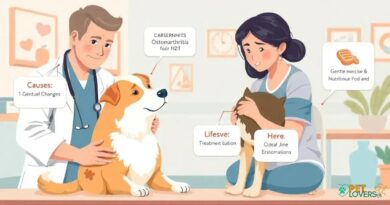What is: Xenobiotics and their effects on dogs
What Are Xenobiotics?
Xenobiotics are chemical substances that are foreign to a biological system. In the context of dogs, these compounds can include a wide range of substances such as pharmaceuticals, pesticides, and food additives. Understanding xenobiotics is crucial for pet owners, as exposure to these chemicals can have significant health implications for dogs.
Sources of Xenobiotics in Dogs
Dogs can be exposed to xenobiotics through various sources, including their diet, environment, and medications. Common sources include commercial dog foods that may contain preservatives and artificial flavors, as well as household products like cleaning agents and insecticides. Awareness of these sources can help pet owners minimize their dogs’ exposure to harmful substances.
Effects of Xenobiotics on Canine Health
The effects of xenobiotics on dogs can vary widely depending on the type and amount of substance involved. Some xenobiotics may cause acute reactions, such as vomiting or diarrhea, while others can lead to chronic health issues, including liver damage or endocrine disruption. Understanding these potential effects is essential for maintaining a dog’s health and well-being.
Common Xenobiotics and Their Impact
Certain xenobiotics are more commonly encountered and can have severe effects on dogs. For instance, non-steroidal anti-inflammatory drugs (NSAIDs) can lead to gastrointestinal ulcers and kidney failure if ingested inappropriately. Similarly, chocolate and certain artificial sweeteners, like xylitol, are toxic to dogs and can cause life-threatening conditions.
Metabolism of Xenobiotics in Dogs
Dogs metabolize xenobiotics differently than humans, which can influence the toxicity of these substances. The liver plays a crucial role in detoxifying xenobiotics, but some compounds may overwhelm this system, leading to adverse effects. Understanding canine metabolism is vital for recognizing the risks associated with various chemicals.
Signs of Xenobiotic Exposure in Dogs
Pet owners should be vigilant for signs of xenobiotic exposure in their dogs. Symptoms can include lethargy, loss of appetite, vomiting, diarrhea, and unusual behavior. If any of these signs are observed, it is essential to seek veterinary care promptly to address potential poisoning or toxicity.
Preventing Xenobiotic Exposure
Preventing exposure to xenobiotics involves being proactive about a dog’s environment and diet. Choosing natural and organic dog foods, avoiding harmful household chemicals, and being cautious with medications can significantly reduce the risk of exposure. Education and awareness are key components in safeguarding a dog’s health.
Veterinary Guidance on Xenobiotics
Veterinarians play a crucial role in educating pet owners about the risks associated with xenobiotics. Regular check-ups and open communication with a veterinarian can help identify potential exposures and address any health concerns early on. Pet owners should not hesitate to consult their vet regarding any questions about chemicals and their effects on dogs.
Research and Future Directions
Ongoing research into xenobiotics and their effects on dogs is essential for improving pet health. As new chemicals are introduced into the market, understanding their impact on canine physiology will help in developing better safety guidelines and recommendations for pet owners. Staying informed about the latest findings can empower dog owners to make safer choices.
Conclusion on Xenobiotics and Dogs
In summary, xenobiotics represent a significant concern for dog owners, given their potential health impacts. By understanding what xenobiotics are, their sources, effects, and how to prevent exposure, pet owners can better protect their furry companions. Awareness and education are vital in ensuring the well-being of dogs in a world filled with chemical substances.




